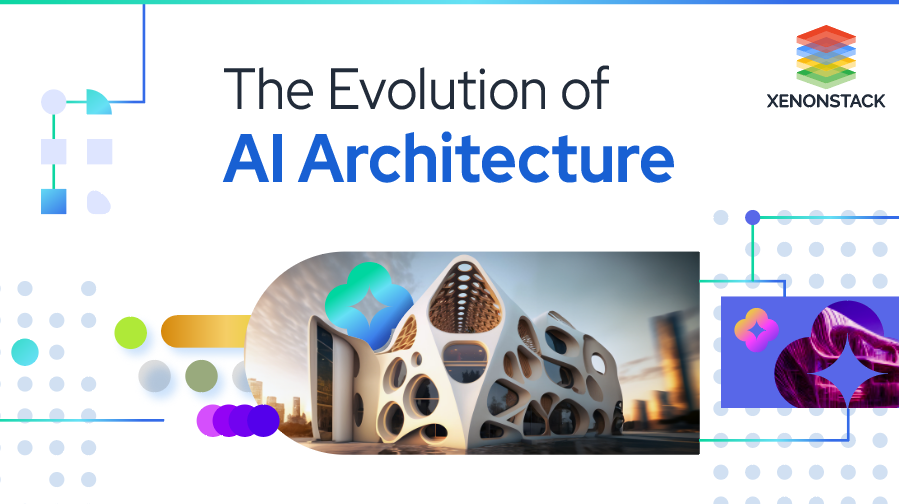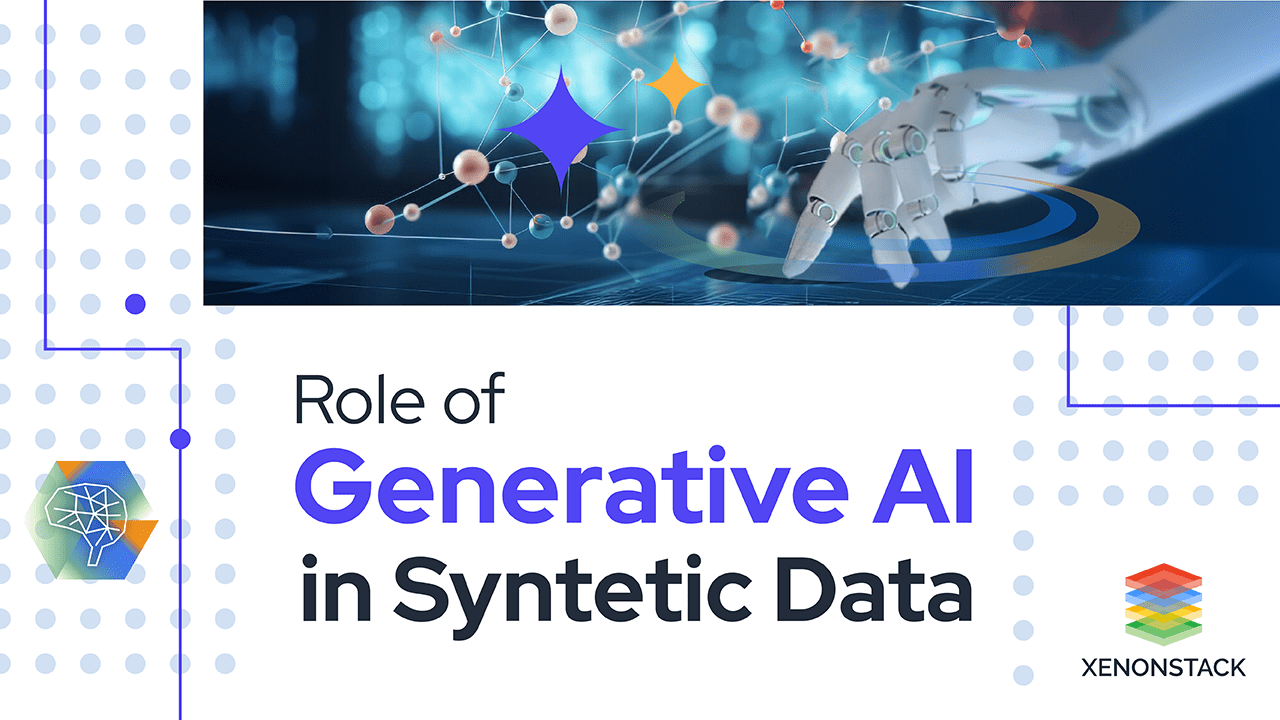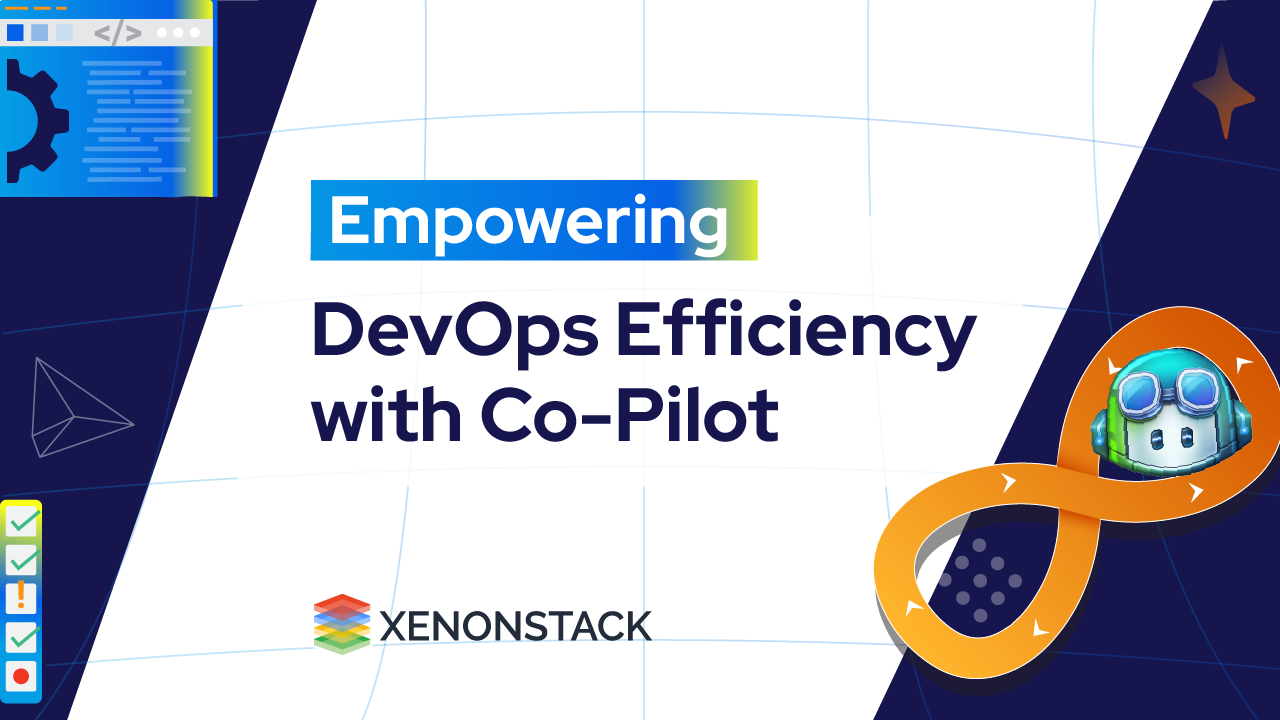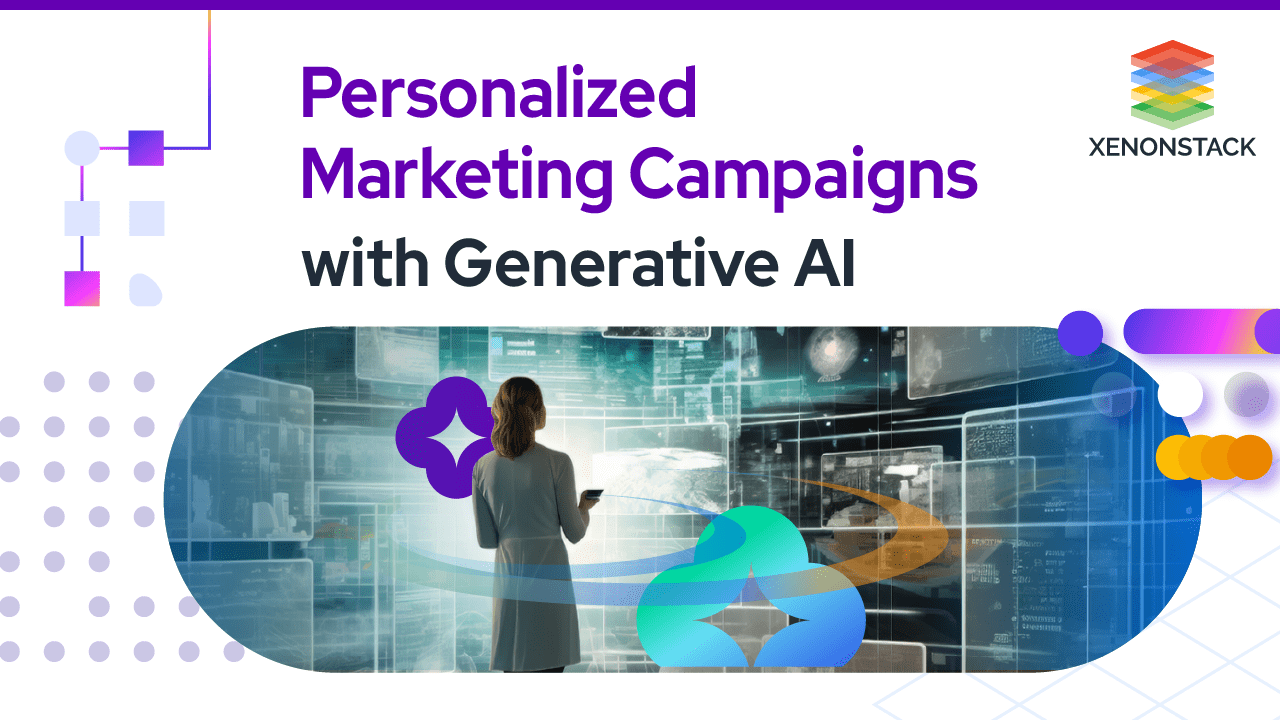Generative AI Architecture
In the future, 2022 may be remembered as the year when generative artificial intelligence (AI) significantly impacted. Generative AI refers to a category of AI models capable of creating media content.
These models primarily rely on user-generated text prompts to generate content, but they can also create media in other forms, such as images. For example, the user must input Prompts like "From a theoretical perspective of human agency, write a 1,000-word literature review of the psychological resilience literature".
Generative AI, dominated by LLMs and text-to-image models, is rapidly improving. Models for audio, video, and music may mature soon.
Large Language Models (LLMs) such as OpenAI's GPT-3 and text-to-image models like Stable Diffusion have revolutionized the potential for generating data. By utilizing ChatGPT and Stable Diffusion, it is now possible to generate natural-sounding text content and photorealistic images at an unprecedented scale. These models have proven to be capable of producing high-quality text and images.
Main Components of Generative AI Architecture
Generative AI architecture refers to the overall structure and components of building and deploying generative AI models. While there can be variations based on specific use cases, a typical generative AI architecture consists of the following key components:
1. Data Processing Layer
This layer involves collecting, preparing, and processing data for the generative AI model. It includes data collection from various sources, data cleaning and normalization, and feature extraction.
2. Generative Model Layer
This layer generates new content or data using machine learning models. It involves model selection based on the use case, training the models using relevant data, and fine-tuning them to optimize performance.
3. Feedback and Improvement Layer
This layer focuses on continuously improving the generative model's accuracy and efficiency. It involves collecting user feedback, analyzing generated data, and using insights to drive improvements in the model.
4. Deployment and Integration Layer
This layer integrates and deploys the generative model into the final product or system. It includes setting up a production infrastructure, integrating the model with application systems, and monitoring its performance.
Layers of Generative AI Architecture
The architecture of a generative AI system typically consists of multiple layers, each responsible for specific functions. While there may be variations based on specific use cases, a typical generative AI architecture includes the following key layers:
1. Application layer
The application layer in the generative AI tech stack enables humans and machines to collaborate seamlessly, making AI models accessible and easy to use. It can be classified into end-to-end apps using proprietary models and apps without proprietary models. End-to-end apps use proprietary generative AI models developed by companies with domain-specific expertise. Apps without proprietary models are built using open-source generative AI frameworks or libraries, enabling developers to build custom models for specific use cases. These tools democratize access to generative AI technology, fostering innovation and creativity.
2. Data platform and API management layer
High-quality data is crucial to achieve better outcomes in Gen AI. However, getting the data to the proper state takes up 80% of the development time, including data ingestion, cleaning, quality checks, vectorization, and storage. While many organizations have a data strategy for structured data, an unstructured data strategy is necessary to align with the Gen AI strategy and unlock value from unstructured data.
3. Orchestration Layer - LLMOps and Prompt Engineering
LLMOps provides tooling, technologies, and practices for adapting and deploying models within end-user applications LLMOps include activities such as selecting a foundation model, adapting this model for your specific use case, evaluating the model, deploying it, and monitoring its performance. Adapting a foundation model is mainly done through prompt engineering or fine-tuning.
Fine-tuning adds to the complexity by requiring data labeling, model training, and deployment to production. In the LLMOps space, several tools have emerged, including point solutions for experimentation, deployment, monitoring, observability, prompt engineering, governance, and end-to-end LLMOps tools.
4. Model layer and Hub
The model layer encompasses several models, including Machine Learning Foundation models, LLM Foundation models, fine-tuned models, and a model hub.
Foundation models serve as the backbone of generative AI. These deep learning models are pre-trained to create specific types of content and can be adapted for various tasks. They require expertise in data preparation, model architecture selection, training, and tuning. Foundation models are trained on large datasets, both public and private. However, training these models is expensive; only a few tech giants and well-funded startups currently dominate the market.
Model hubs are essential for businesses looking to build applications on top of foundation models. They provide a centralized location to access and store foundation and specialized models.
5. Infrastructure Layer
The infrastructure layer of generative AI models includes cloud platforms and hardware responsible for training and inference workloads. Traditional computer hardware cannot handle the massive amounts of data required to create content in generative AI systems. Large clusters of GPUs or TPUs with specialized accelerator chips are needed to process the data across billions of parameters in parallel. NVIDIA and Google dominate the chip design market, and TSMC produces almost all accelerator chips. Therefore, most businesses prefer to build, tune, and run large AI models in the cloud, where they can easily access computational power and manage their spending as needed. The major cloud providers have the most comprehensive platforms for running generative AI workloads and preferential access to hardware and chips.
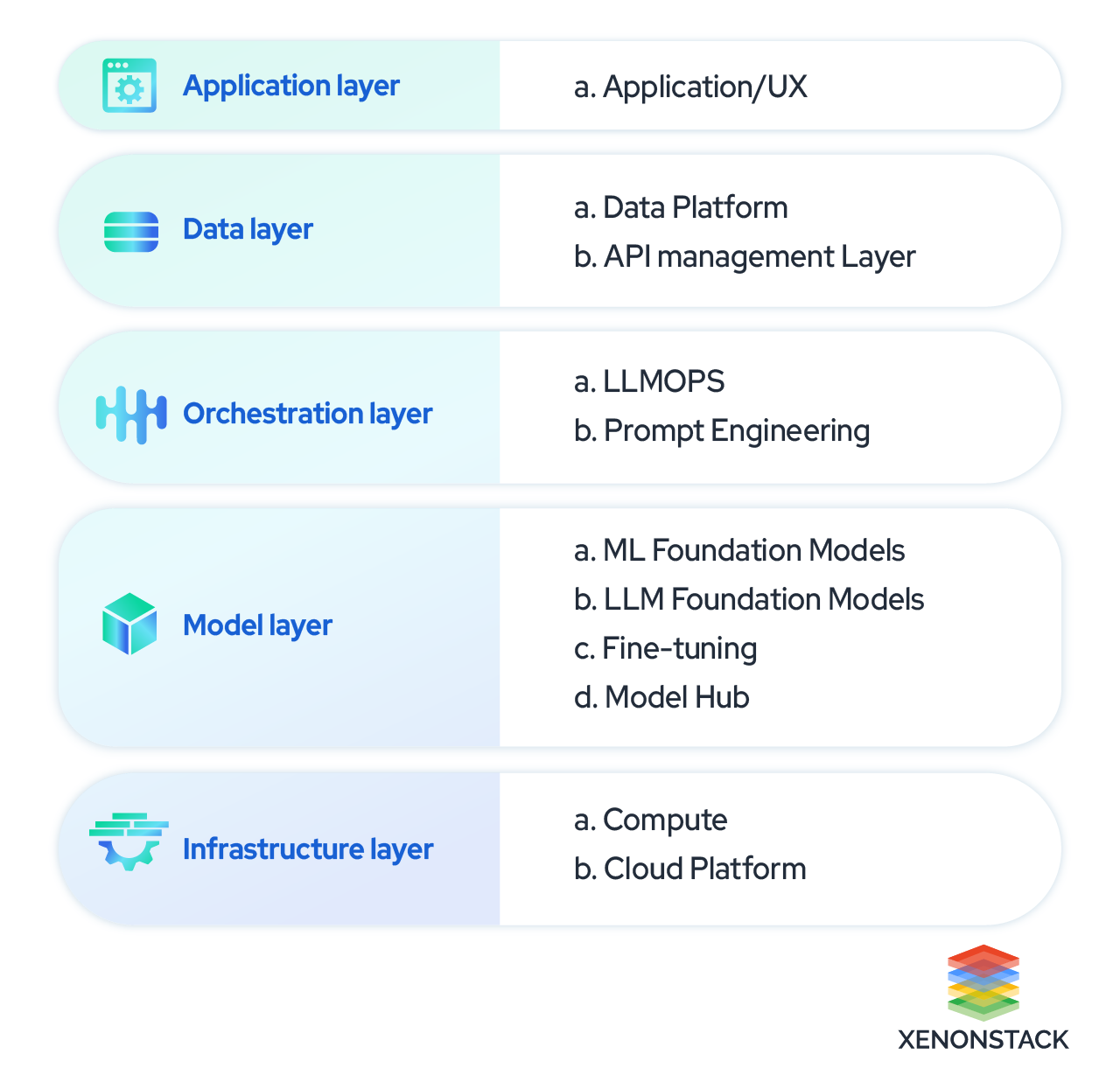
Architecture considerations for Enterprise-Ready generative AI Solutions
By utilizing pre-trained foundation models, businesses can considerably decrease the number of AI models they need to create and maintain. This strategy allows fine-tuning a small set of pre-existing models rather than constantly creating new models for each use case. As a result, businesses can fundamentally transform their architectural approach to AI. Business leaders must ask seven key questions to prepare for the upcoming era of Gen AI.
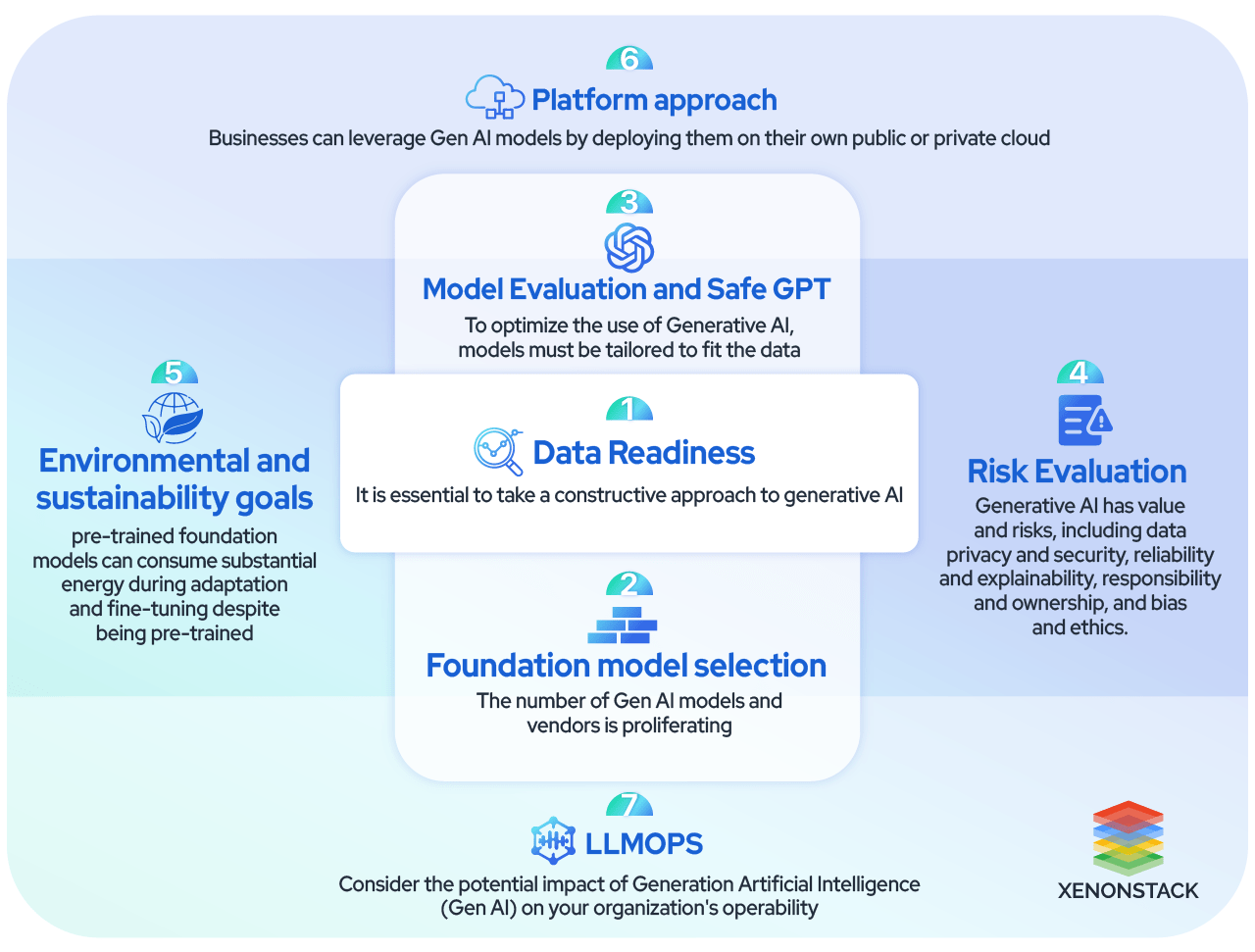
1. Data Readiness
It is essential to take a constructive approach to generative AI. Businesses can set themselves up for success by evaluating the team's readiness and workflows. To support generative AI, high-quality and usable data is essential. This will enable us to identify any gaps and areas for improvement. Data cleansing or enrichment can help if data needs to be prepared. This will help ensure the generative AI model delivers the desired outcomes and performs efficiently.
2. Foundation model selection
The number of Gen AI models and vendors is proliferating. OpenAI and Cohere are some pure-play vendors offering next-generation models developed through fundamental research and trained on publicly available data. Matured open-source models are available via hubs like Hugging Face. Cloud hyperscale also partners with pure-plays, adopt open-source models, and provide full-stack services. Pre-trained models on specialized domain knowledge are becoming increasingly accessible. Smaller and lower-cost foundation models like Databricks’ Dolly make building or customizing Gen AI more accessible. However, careful consideration must ensure that the option fits the organization’s needs and requirements.
3. Model Evaluation and Safe GPT
Models must be tailored to fit the data to optimize the use of Generative AI. This can be done by acquiring pre-trained models, incorporating proprietary data, or building new models. However, modern data infrastructure is necessary to fully realize Generative AI's benefits. When integrating GPT models, organizations must prioritize security, reliability, and responsibility and consider integration and interoperability frameworks. Companies must also evaluate Responsible AI implications and develop mitigation techniques to ensure AI models meet essential requirements and do not compromise enterprise security.
4. Risk Evaluation
Generative AI has value and risks, including data privacy and security, reliability and explainability, responsibility and ownership, and bias and ethics. These risks can manifest in various ways, such as regulatory fallout from undisclosed data collection and retention, errors in generated content due to deficiencies in the training data, legal ownership issues, and discriminatory content due to biased training data. Enterprises need to be aware of these risks and work with legal teams to manage IP and evolve ESG goals while being vigilant about data privacy and security, fact-checking AI-generated content, and moderating content to remove biases or stereotypes.
5. Environmental and sustainability goals
It is essential to be aware that pre-trained foundation models can consume substantial energy during adaptation and fine-tuning despite being pre-trained. If developers are considering a pre-training model or creating one from scratch, this is something to remember. The energy consumption levels can vary significantly depending on how foundation models are obtained, whether through purchasing, boosting, or developing. Neglecting to address this issue could negatively impact an organization's carbon footprint, particularly as Gen AI applications are scaled up across the enterprise. Therefore, it is crucial to consider potential environmental impacts beforehand and explore available options.
6. Platform approach
Businesses can leverage Gen AI models by deploying them on their own public or private cloud, giving them complete control over the models, or by accessing Gen AI through a managed cloud service from an external vendor for faster and simpler implementation. However, complete control requires identifying and managing the necessary infrastructure, version controlling the models, and developing the required talent and skills. Although dedicated infrastructure provides better cost predictability, it requires additional effort and complexity to achieve enterprise-scale performance.
7. LLMOPS
Consider the potential impact of Generation Artificial Intelligence (Gen AI) on your organization's operability. Many companies have developed Machine Learning Operations (MLOps) frameworks to standardize the production of ML applications. However, reviewing these frameworks to incorporate Low-Level Machine Operations (LLMOps) and Gen AIOps considerations is essential.
This includes accommodating changes in DevOps, Continuous Integration/Continuous Deployment/Continuous Testing (CI/CD/CT), model management, model monitoring, prompt management, and data/knowledge management in pre-production and production environments. The MLOps approach must evolve for foundation models, considering processes across the entire application lifecycle. With AutoGPT, artificial intelligence automates the production, monitoring, and calibration of models and model interactions to deliver business service level agreements (SLAs).
Generative AI Architecture Focus Areas
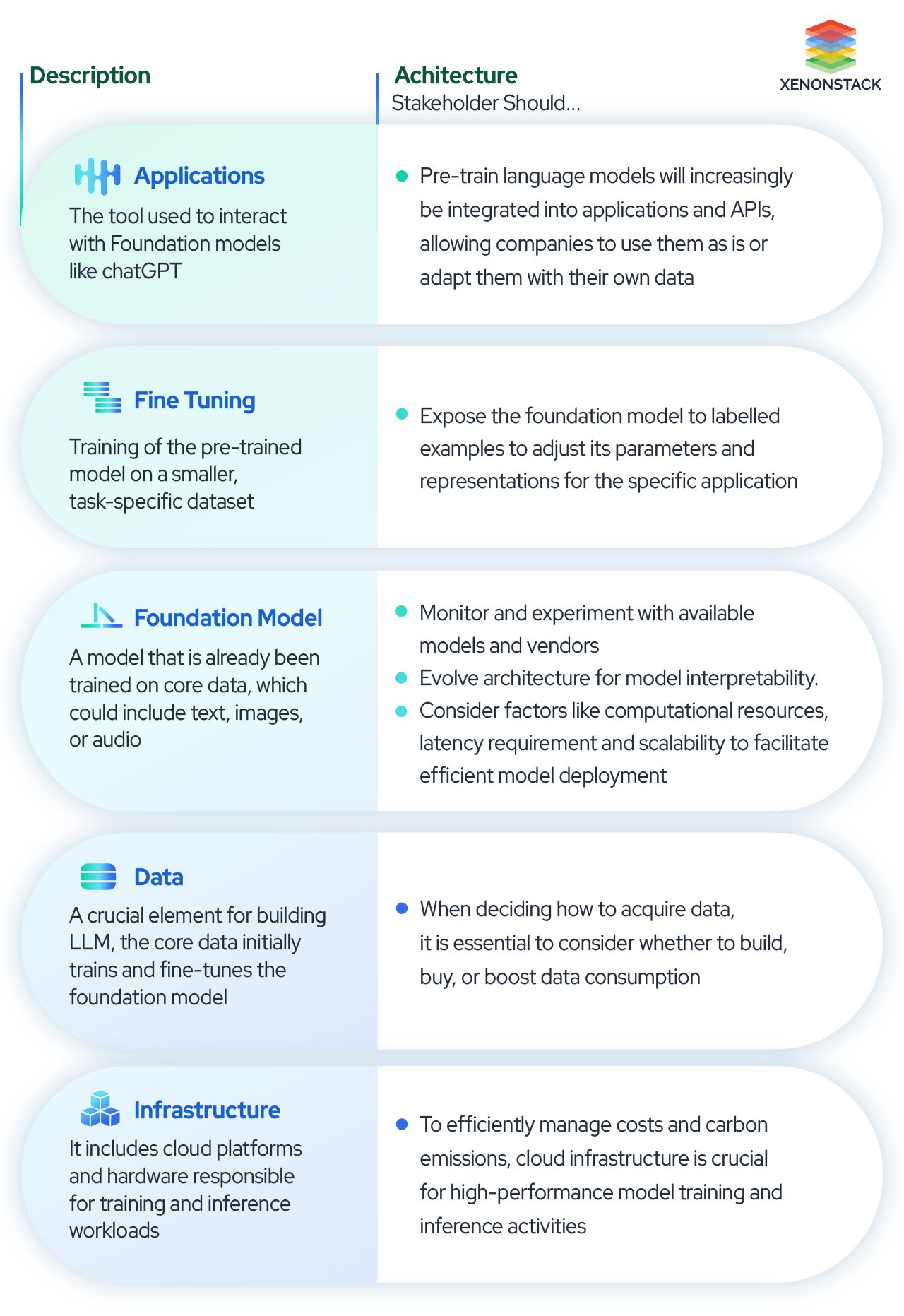
How to Select a Foundation Model?
A thorough analysis is necessary when selecting a foundation model and deciding between open- and closed-source options. Factors to consider
i. Project requirements and objectives
What specific tasks and goals does your project require the model to achieve?
ii. Cost implications
What are the costs of each option, including initial expenses, maintenance, and future expenses?
iii. Data privacy and security
How does each model handle sensitive data? Is it secure for projects involving confidential or personal information?
iv. Customization and control
Do you need advanced customization options that allow you to adjust and modify model parameters to a great extent?
v. Support and community
The level of community support is vital. Does it align with the team's expertise and resources?
vi. Scalability and performance
What is the model's ability to handle growing volumes of data and increasing task complexity, both currently and in the future?
vii. Legal and ethical considerations
What ethical and legal implications, including potential biases in the model and restrictions on data usage and commercial applications, need to be considered?
viii. Availability of skills and resources
Is your team equipped to implement and maintain an open-source model? Or would a closed-source, ready-made solution be more suitable?
ix. Long-term viability
How sustainable is the model for ongoing support and development? This ensures its long-term usefulness.
x. Integration with existing systems
How well does the model integrate with your current infrastructure and workflows, particularly in complex or established operational environments?
